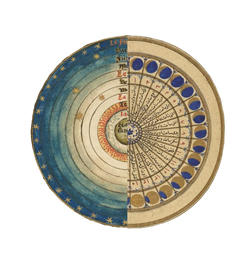This paper aims to offer a comprehensive overview of the production of the cosmographer al-Qazwīnī, highlighting the profound influence of the historical changes that occurred in the 13th century on his works. Living between 1203 and 1283 and traveling in the region encompassing present-day Iran, Iraq, and Turkey, al-Qazwīnī wrote only two works – a cosmography entitled ‘Ajā'ib al-makhlūqāt wa-gharā'ib al-mawjūdāt (written around 1262) and a geographical work entitled Āthār al-bilād wa-akhbār al-‘ibād (written around 1275) – that represent both masterpieces of the Arabic geographical and cosmographical literature, respectively. Especially his ‘Ajā'ib al-makhlūqāt influenced profoundly Islamic cosmographic thinking for several centuries, not only because it was translated into several Islamic languages (Persian, Ottoman Turkish, and Urdu, among others) but also because it was a model for almost all the following works of this genre. Although having a universal outlook, both works contain several references to what happened in the 13th century at the end of the Abbasid period and include information about what Qazwīnī himself partly experienced due to the Mongol invasion and the various displacements it caused. For these reasons, they can be considered privileged sources for investigating the encounter between history and science and how it is reflected in the conception of a work and its content. The synthesis of scientific information that both offer, the images accompanying them, and the historical urgency behind the writing of both will be discussed in the paper.
- Poster

 PDF version
PDF version

